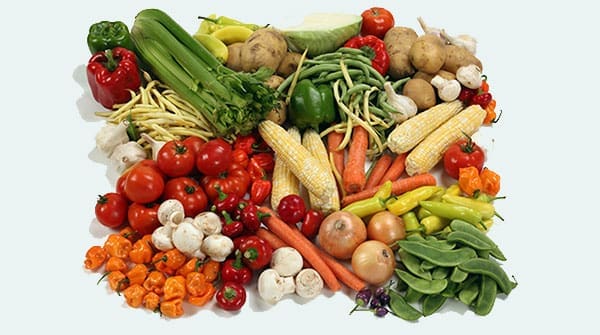 Canadians need to put fruits and vegetables back on their tables.
Canadians need to put fruits and vegetables back on their tables.
We don’t eat enough produce. In fact, 59 percent of Canadians don’t eat their daily required portions of vegetables and fruits, according to surveys. And a recent study by the universities of Guelph and Dalhousie suggests that number may have worsened in recent months, mainly because of higher retail prices.
Most vegetable and fruit prices have increased by more than 10 percent in the last 12 months. More than 1,000 Canadians were surveyed on how they cope with sticker shock in the produce aisle. Due to higher produce prices, 26 percent said they have reduced their consumption of produce in the last year. This is alarming since, unlike meats or other products, there are few real substitutes for produce.
As well, more than 45 percent of those surveyed have considered or have purchased frozen produce.
In addition, surprisingly, the majority of lower-income households opted for juices in place of vegetables and fruits. Knowing that not all juices are equal, it begs the question: what kind of juices are consumers looking for when produce prices are out of reach?
The study also showed how more access to data causes consumers to behave differently. Most respondents who walk into a store to buy produce without first researching prices were more likely to walk away from the infamous cauliflower. Yet cauliflower prices were far from the most volatile in recent months. Lettuce, tomatoes and oranges were much more volatile, which may have been recognized by the more savvy consumers. The survey suggests that consumers who visit stores more often were more likely to notice more volatile prices. The same goes for those who use varied technologies and check different sources. For example, it appears smartphone apps and flyers make consumers smarter and more rationale.
Overall, the study suggests that lower-income households are highly vulnerable to fluctuating produce prices – in fact, more than other socio-demographic groups. As well, the majority of lower-income consumers believe price hikes are unjustified. When climate change and depressed currency factors were cited by experts and industry as causing higher prices, this group was anything but convinced. The same holds true for those in lower-education categories and those who were less well informed in general.
Produce may not be the most popular foodstuff, but it is essential to better nutrition and, thus, quality of life. Making sure that Canadians eat properly is critical to general well-being. But a significant group of consumers won’t hesitate to either walk away from the produce section or find less-than-appropriate alternatives when prices fluctuate.
We need to take measures to change the trend away from produce.
Without intervening with retail price fixing, the state should proactively encourage consumers to regularly purchase and consume produce.
As well, industry should be teaching the public how to cope with price fluctuations. Climate change and swift shifts in our currency mean prices fluctuate hourly. Indeed, systems that set prices based on supply and demand every hour are almost upon us in Canada – we already see them in other parts of the world. For the vulnerable to avoid being caught at the high end of a price cycle, they need access to information.
In addition, Canada’s lack of domestic produce should be dealt with. Indeed, positive changes are already underway. In recent months, financiers have funded Canadian greenhouse projects that will deliver year-round crops. In the longer term, climate change and weaker currency only build the case for greenhouses here.
Our mothers wanted us to eat our veggies because they cared. It’s time we all cared enough to put ample servings of fruits and vegetables on every Canadian’s table, particularly the less fortunate.
Dr. Sylvain Charlebois is senior director of the agri-food analytics lab and a professor in food distribution and policy at Dalhousie University.
Sylvain is a Troy Media contributor. Why aren’t you?
The views, opinions and positions expressed by columnists and contributors are the author’s alone. They do not inherently or expressly reflect the views, opinions and/or positions of our publication.


